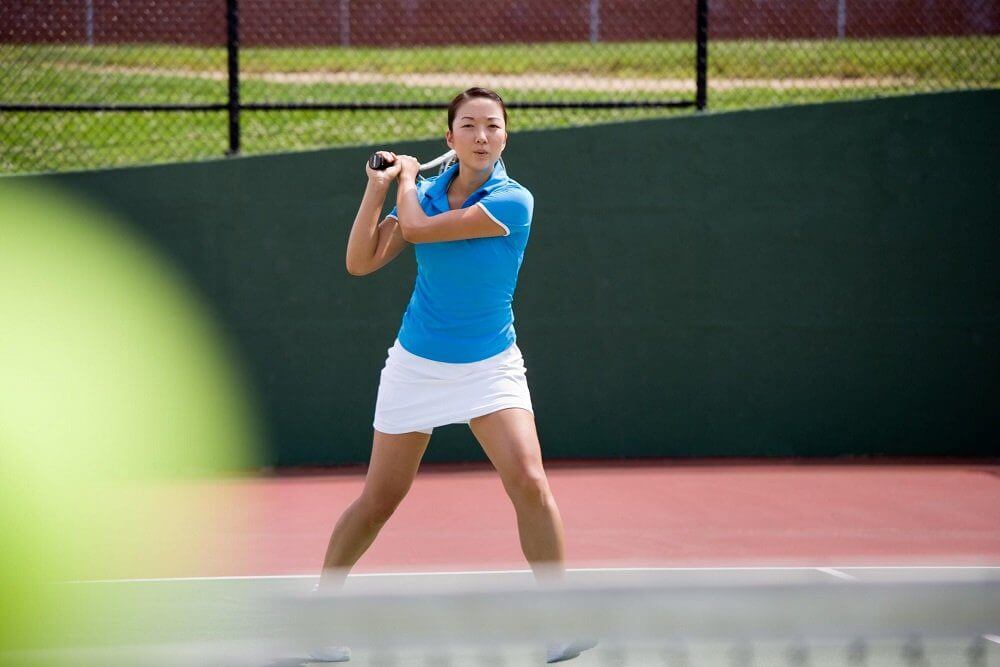If you want to become a well-rounded tennis player, you’re going to have to spend some time adding defensive shots to your arsenal. After all, nothing is worse than losing to an opponent because they discovered a weakness in your defensive strategies. One of the most important shots to develop along these lines is the defensive backhand, as you will probably have to use it in matchplay more often than you would like. You know the shots I’m talking about… the ones you have to hit while on the run, or the ones being fired at you like a bullet while you’re up at net.
If you’ve been having trouble with attack shots being hit to your backhand side, put the following three tips to work to help you improve your defensive backhand.
Focus on improving your footwork.
Have you ever noticed how elite-level pros such as current World No. 1 Iga Swiatek and World No. 3 Maria Sakkari seem to be everywhere on the court at once? How is it that they can be so quick to get to the ball no matter where it lands? The answer can be summed up in one word, ladies: Footwork.
You can have the most powerful backhand shot in the business, but without developing good footwork, you will struggle to put yourself in a decent position to return your opponent’s attack shots. Try incorporating footwork drills into your training to improve your speed and agility, and don’t shy away from jumping rope either, as it’s a great way to improve your coordination and timing.
Here’s a great video from tennis coach and fitness trainer, Gabi at Fit in Tennis. In it, she demonstrates a footwork “workout” with a Bosu ball that will help you improve your movement on the court. Visit her website at fitnintennis.com for more awesome fitness and tennis instruction, follow her on Instagram at @fitintennis and subscribe to her YouTube channel, Fit In Tennis.
Practice early ball recognition.
Learning how to quickly recognize the speed, direction, and trajectory of your opponent’s shots will keep you from being taken by surprise out on the court. As soon as your opponent’s racquet makes contact with the ball, you should zero in on the ball’s flight path so that you can know how to prepare for your defensive backhand shot.
Try hitting with a partner, and ask them to focus on hitting a variety of attack shots to your backhand side. The more unpredictable the better, because you want your practice sessions to simulate real match play as much as possible. Don’t have a hitting partner? Use the wall. The wall makes a great hitting partner as the ball doesn’t always bounce back where you expect it, so you will automatically be on defense.
Perfect your backhand slice.
When you perform a backhand slice, instead of swinging the racquet in a completely sideways motion and hitting squarely on the ball, you’ll give it a downward chopping or cutting motion, so that you “slice” it a little (hence the name) as you execute the stroke. What this normally does is slow down the speed of the ball, causing it to basically float back over the net.
This defensive backhand shot is very off-putting to your opponent because they’re having to transition from assuming a more aggressive attack posture to basically trying to chase the ball down. Not all backhand slices have to produce a floating shot, however. With enough practice hitting the slice with the racquet face only slightly open, you can better control the speed and direction at which the ball rebounds off your racquet and really turn your slice into a weapon.
In order to properly execute this stroke in the heat of battle, you have to spend a lot of time practicing the timing of your backhand slice, including how to properly take the racquet back as your opponent’s shot is making its way towards you. Your body should be turned sideways so that the shoulder of your hitting arm is squarely facing the ball, and as you swing (or “slice”) the racquet down, you should be shifting your weight from your back foot to your front foot.
Try practicing your backhand slice with a hitting partner, and don’t be afraid to experiment with tilting the face of the racquet at different angles to see how the ball responds.
Here’s an excellent video from our own Jane Forman that teaches the fundamentals of the slice backhand. Use these tips to learn or tweak your backhand slice and you’ll have a real weapon in your tennis arsenal in no time! Be sure and follow Jane at Team Forman Tennis on YouTube for nearly 200 (and counting) instructional videos that will take your game to a whole new level!
In summary:
Having a well-developed defensive backhand shot can save you from many a lost point during match play. Put the above tips into practice, and practice often to turn what was formerly a weakness into one of your most effective weapons on the tennis court!


